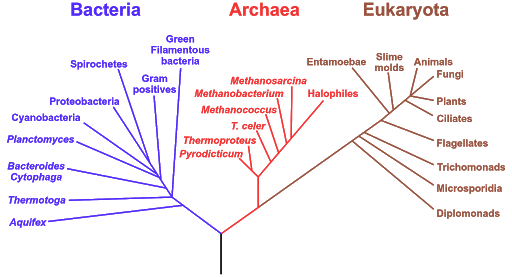What is the difference between archaea and bacteria?
Both archaea and bacterial are prokaryotes. These two microorganisms belong to the kingdom of Monera. Understanding these two terms tend to be quite complicated.
The core difference between archaea and bacteria is that archaea refer to a single-celled organism with distinctive cell properties while bacteria refer to a single-celled organism that lives in a diverse environment.

What Is Archaea?
Archaea are novel prokaryotes and they are also known as extremophiles. These organisms comprise cells with distinctive properties that are quite unique from another organism.
What You Need to Know about Archaea
- They are single-celled organism
- Tend to have an underdeveloped nucleus
- Tend to lack other organelles
- They have pseudopeptidoglycan cell wall
- They reproduced asexually by binary fission, budding process, and fragmentation
- They tend to be non-pathogens
- They are grouped into Methanogens, Thermophiles, and Halophiles
What Is Bacteria?
Bacteria are single-celled organisms that live in a diverse environment. They have complex structures that execute cellular functions in their bodies.
What You Need to Know About Bacteria
- They are also known as Eubacteria
- They are prokaryotic organism
- Lack of nucleus and other membrane-bound organelles
- Have cell wall made of peptidoglycan
- The size and shape of bacteria tend to vary
- They can either be gram-positive or gram-negative bacteria
Comparison Chart: Archaea vs Bacteria
| Basic Terms | Archaea | Bacteria |
| Meaning | It is single-celled organisms that comprise cells with distinctive properties | It is a single-celled organism that comprises complex cell structures |
| Habitat | Tend to live in extreme and harsh environments | Tend to live in a diverse environment |
| Cell wall | Pseudopeptidoglycan | Peptidoglycan / Lipopolysaccharide |
| Reproduction | Budding, binary fission and fragmentation | Production of spores |
| Lipid membrane | Have ether bonds with the branching of aliphatic acids in the lipid membrane | Have the lipid membrane of ester bonds with fatty acids. |
| Metabolic pathway | Do not follow the glycolysis pathway and Kreb’s cycle | Tend to follow the glycolysis pathway and Kreb’s cycle |
| Types | Methanogens, Halophiles, Thermoacidophiles. | Gram-positive and gram-negative. |
| Effect on the host | Non-pathogens | Tend to be pathogens |
| RNA polymerase | Tend to be complex and comprise of 10 subunits. | Tend to be simple and contain 4 subunits. |
| Examples | Pyrolobus fumarii. Sulfolobus acidocaldarius. Pyrococcus furiosus. Methanobacterium formicum. |
Streptococcus pneumoniae.
Yersinia pestis. Escherichia coli (E.coli). Salmonella enterica. |
Core Differences between Bacteria and Archaea in Point Form
- Archaea reproduce asexually by budding, fragmentation, and binary fission while bacteria reproduce through the formation of spores
- The cell wall of the archaea contain Pseudopeptidoglycan while that of bacteria either Lipopolysaccharide or Peptidoglycan
- The metabolic activity of bacteria is Autotrophy, Aerobic, and Anaerobic Respiration while that of archaea is Methanogenesis
- The RNA of archaea is complex and consist of 10 subunits while that of bacteria is simple and it contains 4 subunits
- Archaea tend to be non-pathogens while bacteria tend to be pathogens
- Archaea thrive in an extreme and harsh environment while bacteria thrive in a diverse environment
- The lipid membrane of archaea contains ether bonds with the branching of aliphatic acids while bacteria lipid membrane contains ester bonds with fatty acids.
- Archaea are grouped into Methanogens, Halophiles, and Thermoacidophiles while bacteria are grouped as gram-positive and gram-negative
- Archaea have introns while bacteria lack introns
- Examples of archaea are Pyrolobus fumarii, Sulfolobus acidocaldarius, Pyrococcus furiosus, and Methanobacterium formicum while those of bacteria are Streptococcus pneumonia,Yersinia pestis, Escherichia coli (E.coli) and Salmonella enterica.
Similarities between Archaea and Bacteria
- Both have similar size and shape
- Both lack nucleus and membrane-bound organelles
- Both are single-celled organism
- Both are either autotrophs or heterotrophs
You May Also Like:
Comparison Video
Summary
Both archaea and bacterial show morphological similarities despite the above slight differences. They tend to prosper in different weather conditions.